Birdfinding.info ⇒ A form of Western Spindalis that is common in the central Bahamas, but becomes scarce or local southward. Easy to find throughout the dry woodlands of Andros Island: e.g., at Maiden Hair Coppice and Blue Hole National Park. Can also be found in parks and gardens in Nassau.
“Black-backed Spindalis”
Spindalis zena zena
Endemic to the central and southern Bahamas and Turks & Caicos, north to the Berry Islands and Castaway Cay (west of Abaco). Locally common in woodlands, especially on Andros.
More prone to wandering than other spindalises, likely due to the fact that it breeds on many small islands and therefore is adapted to dispersing over water. Occurs roughly annually in southern Florida, where it has bred.
Identification
Male is distinctive but very similar to the other Bahaman spindalis, “Dark-backed,” which overlaps with it on a limited basis. “Black-backed” has an all-black back that is bordered by chestnut on the nape and the rump.
Male “Black-backed” is highly variable in the coloration of the breast. Most individuals have a dark chestnut or blackish bib surrounded by progressively paler shades of orange, but many individuals have a much paler bib and breast, and many occupy the spectrum between the extremes.
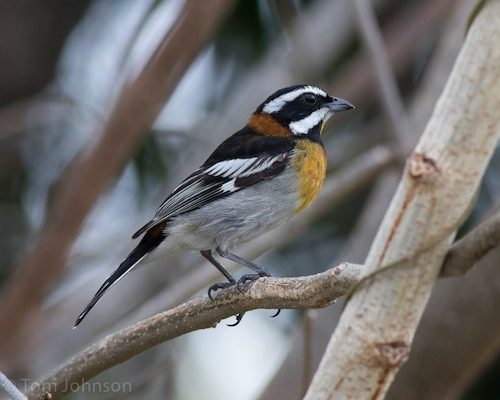
“Black-backed Spindalis,” S. z. zena, male. (Gulfstream Shores, Key Largo, Florida; May 5, 2017.) © Tom Johnson

“Black-backed Spindalis,” S. z. zena, male. (Markham Park, Sunrise, Florida; February 29, 2016.) © Tammy McQuade

“Black-backed Spindalis,” S. z. zena, male. (Maiden Hair Coppice, North Andros, Bahamas; May 21, 2016.) © Andrew Spencer

“Black-backed Spindalis,” S. z. zena, male. (Central Andros National Park, Bahamas; November 23, 2012.) © John H. Boyd III
First-year males are easily confused with “Dark-backed Spindalis,” as their backs are mottled olive and black.
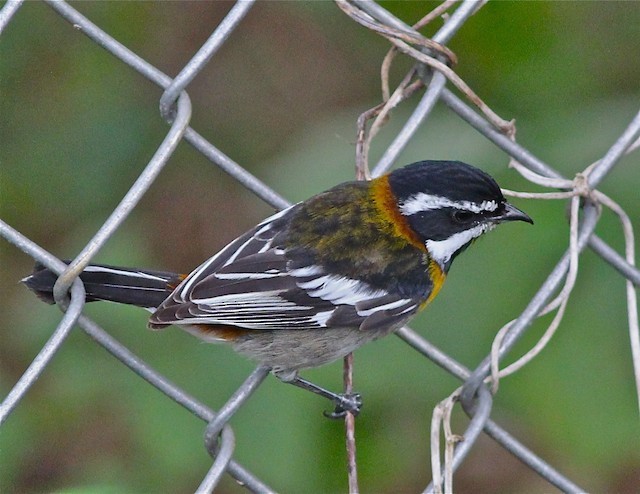
“Black-backed Spindalis,” S. z. townsendi, first-year male. (Markham Park, Sunrise, Florida; January 7, 2016.) © Bill Hill
Female and immature are also unique within their range, but less distinctive, plain olive-brown above, with a muted version of the male’s head pattern, and pale, faintly streaked underparts. May be indistinguishable from female and immature “Dark-backed.”
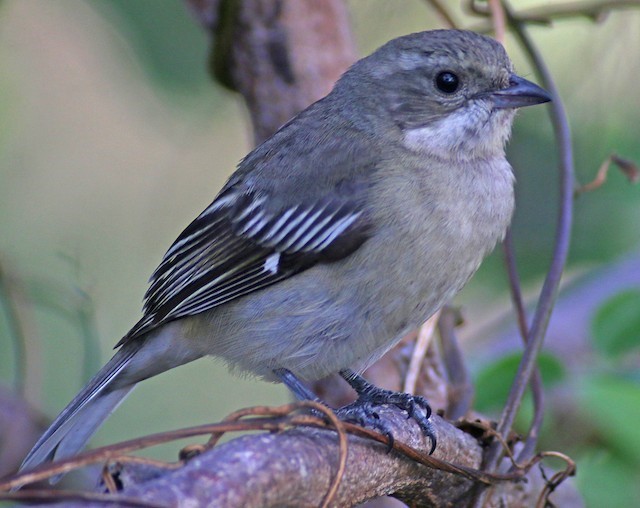
“Black-backed Spindalis,” S. z. zena, female. (New Providence, Bahamas; February 21, 2017.) © Corey Finger

“Black-backed Spindalis,” S. z. zena, immature male molting into adult plumage. (Central Eleuthera, Bahamas; August 10, 2018.) © Will Johnson
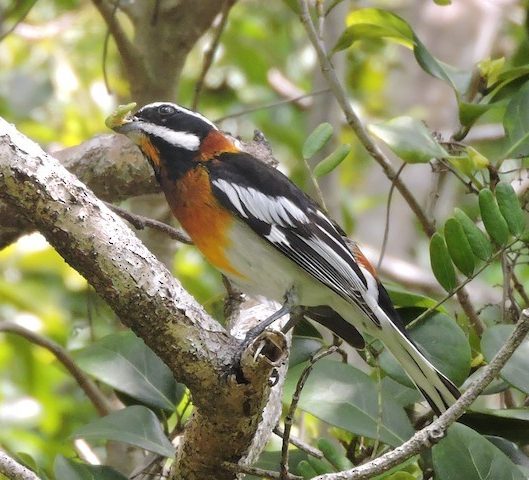
“Black-backed Spindalis,” S. z. zena, male. (Blue Holes National Park, North Andros, Bahamas; April 25, 2018.) © Kathryn Cowdery
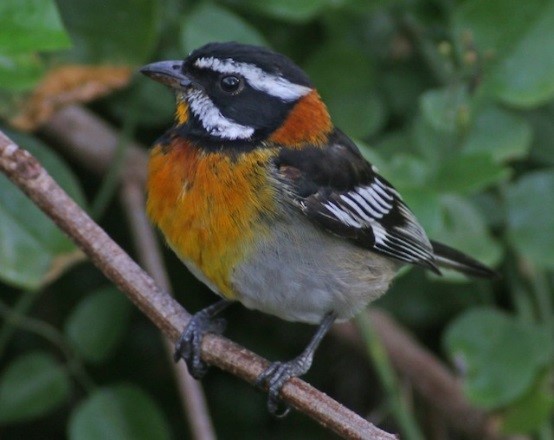
“Black-backed Spindalis,” S. z. zena, male. (New Providence, Bahamas; February 21, 2017.) © Corey Finger

“Black-backed Spindalis,” S. z. zena, male. (Blue Holes National Park, North Andros, Bahamas; March 19, 2018.) © Stuart White
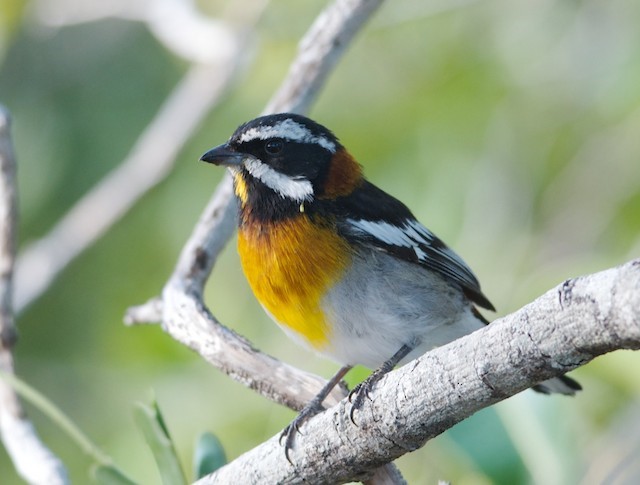
“Black-backed Spindalis,” S. z. zena, male. (Mount Pleasant Lodge, Central Andros, Bahamas; December 9, 2015.) © Michael Bolte
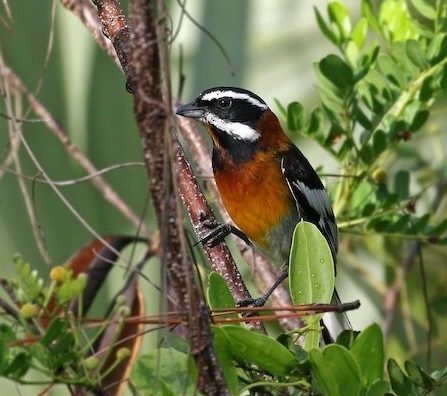
“Black-backed Spindalis,” S. z. zena, male. (Maiden Hair Coppice, North Andros, Bahamas; May 21, 2016.) © Andrew Spencer

“Black-backed Spindalis,” S. z. zena, male. (Long Pine Key Campground, Everglades National Park, Florida; July 15, 2017.) © David McQuade
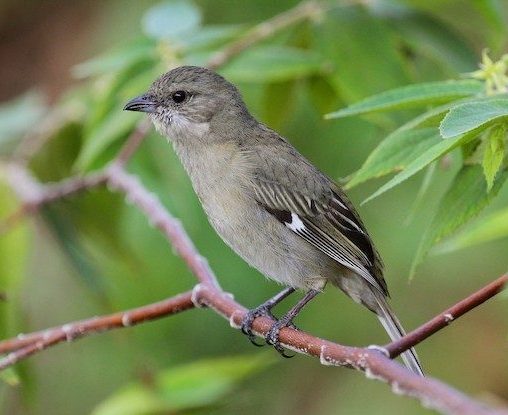
“Black-backed Spindalis,” S. z. zena, female. (New Providence, Bahamas; February 14, 2014.) © Paul Lewis
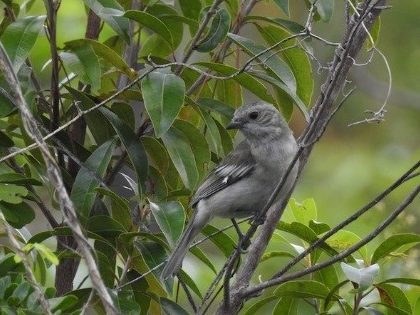
“Black-backed Spindalis,” S. z. zena, female. (Blue Holes National Park, North Andros, Bahamas; April 25, 2018.) © Colleen Cowdery
Notes
Monotypic form, one of five potentially distinct forms of Western Spindalis.
Distinguishable from other forms of Western Spindalis based on voice and coloration. “Dark-backed Spindalis” is clearly a close relative, and it is possible that these two could be considered a single species separate from the other forms of Western Spindalis.
All spindalises were formerly considered to be a single species, the Stripe-headed Tanager, S. zena.
References
eBird. 2018. eBird: An online database of bird distribution and abundance. Cornell Lab of Ornithology, Ithaca, N.Y. http://www.ebird.org. (Accessed December 8, 2018.)
Hilty, S. 2018. Western Spindalis (Spindalis zena). In Handbook of the Birds of the World Alive (J. del Hoyo, A. Elliott, J. Sargatal, D.A. Christie, and E. de Juana, eds.). Lynx Edicions, Barcelona. https://www.hbw.com/node/61832. (Accessed December 5, 2018.)
Howell, S.N.G., I. Lewington, and W. Russell. 2014. Rare Birds of North America. Princeton University Press, Princeton, N.J.
Raffaele, H., J. Wiley, O. Garrido, A. Keith, and J. Raffaele. 1998. A Guide to the Birds of the West Indies. Princeton University Press, Princeton, N.J.
